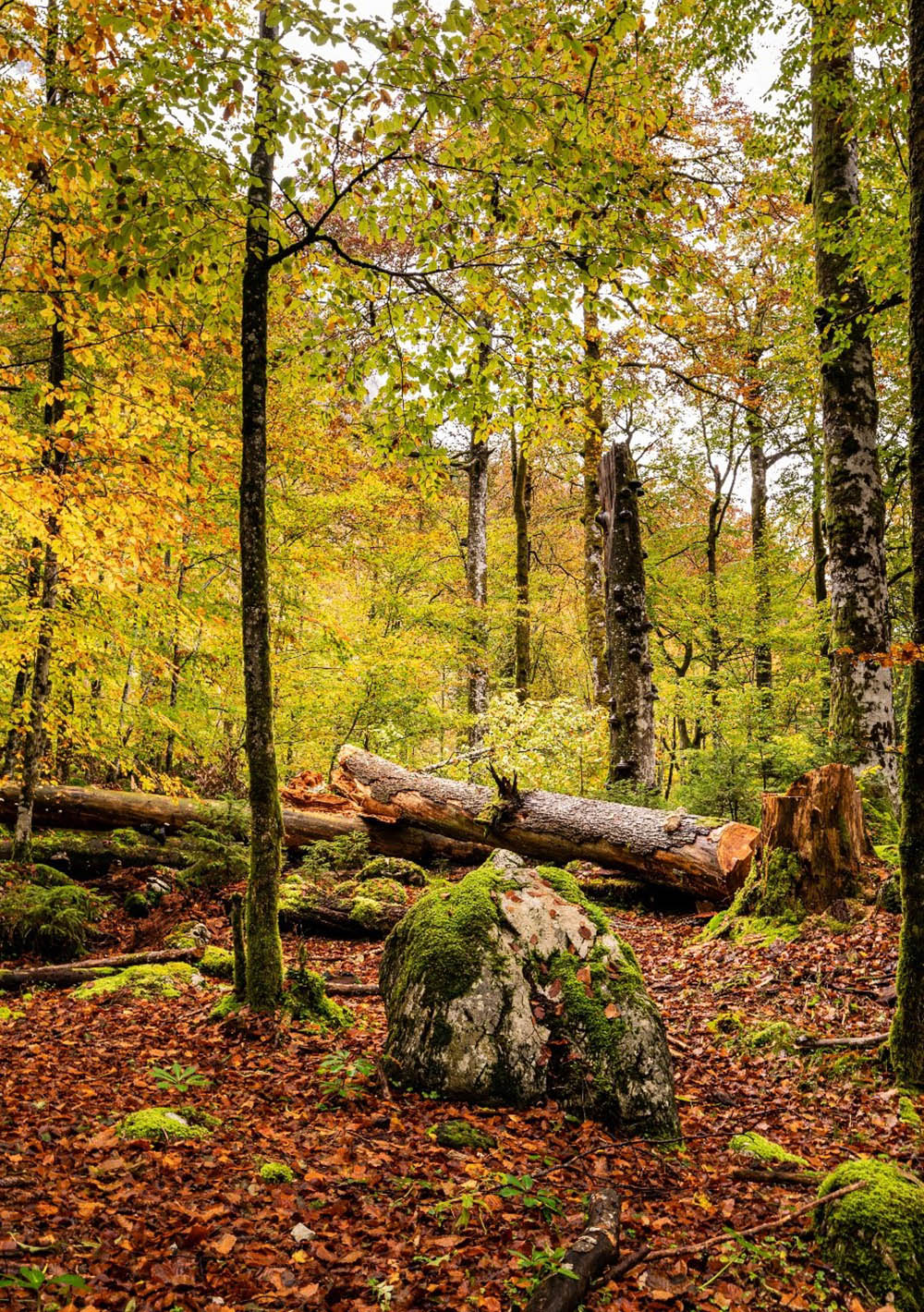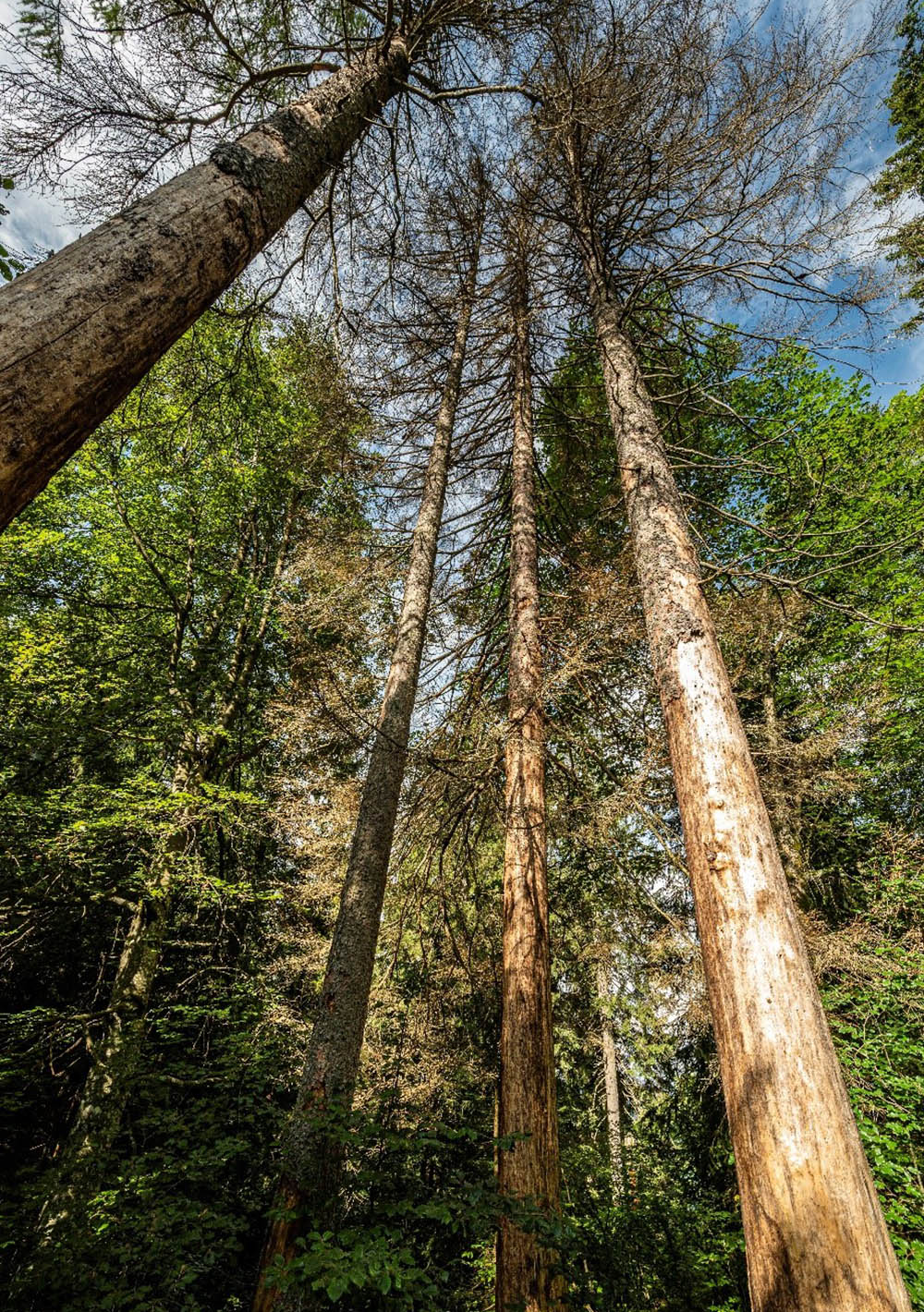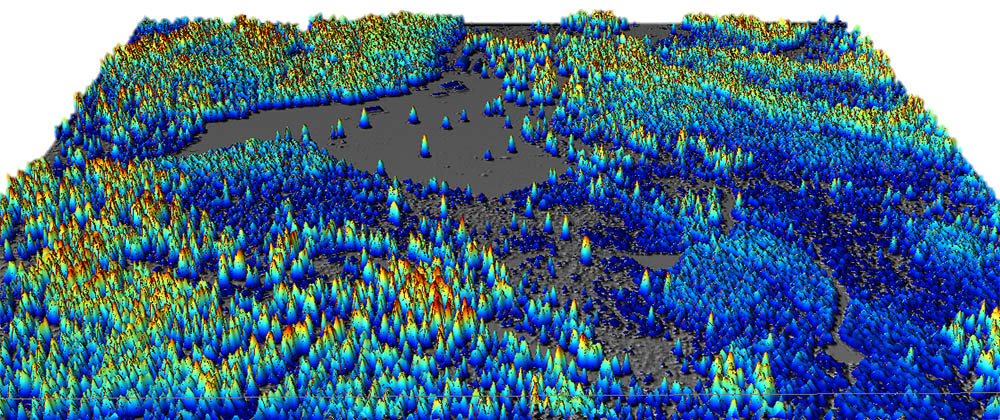Forest Dynamics
Forests are dynamic ecosystems and subject to constant change. The processes responsible for this occur in a national park, over large areas, without direct human influence. This process conservation allows insights into natural forest dynamics on different spatial and temporal scales. Current research projects in the Berchtesgaden National Park are concerned with the natural disturbance dynamics of forests, as well as the development of forest structures since the middle of the last century.

Natural forest structures in a submontane beech forest (Photo: Michael Maroschek)
The Berchtesgaden National Park, as Germany's only Alpine National Park, is home to forest ecosystems from the submontane altitudinal zone to the tree line. The ecosystem processes of growth, mortality and regeneration occur here without direct human influence. To better understand these processes, methods and products from remote sensing are applied, in addition to forest inventory data and data from intensive forest monitoring plots. The portfolio ranges from satellite data to aerial images and laser scanning. Thus, questions can be answered on different spatial and temporal scales.
In an alpine-wide project, in close cooperation with the Technical University of Munich (TUM, Ecosystem Dynamics and Forest Management in Mountain Landscapes), the natural disturbance regime of forests is being investigated using satellite data-based disturbance maps. Through the Alpine Network of Protected Areas (ALPARC), 12 high-ranking protected areas (IUCN categories I and II) were recruited as partners in order to make representative statements about the forests of the Alps. The results provide information on the characteristics of natural disturbance regimes in the Alps.

Spruce (Picea abies) dead due to bark beetle infestation (Photo: Michael Maroschek)
Within the national park, the spatial and temporal development of forest structures (e.g. gaps, redds, forest boundary, ecotones between altitudinal levels) is investigated. For this purpose, aerial photo time series covering a period since the middle of the last century are processed and analyzed using current methods (deep learning). The influences of land use history, climate change and disturbances on the dynamics of forest structures and their diversity are elaborated. The integration of laser scanning data allows a more detailed view of forest structures and enables insights in a three-dimensional context.

Point clouds as the basis for deriving three-dimensional features (Graphic: Lisa Mandl)
Contact:
Prof. Dr. Rupert Seidl
Ecosystem dynamics, forest management, disturbance ecology, ecosystem modeling, landscape ecology, climate impact research, resilience, silviculture.
Michael Maroschek
Disturbance ecology and forest ecosystem dynamics of mountain forests at different spatial and temporal scales.
Lisa Mandl
Evaluation of spatio-temporal recovery patterns of forest ecosystems after disturbances using remote sensing and spatial analysis.